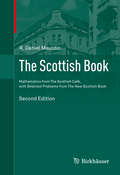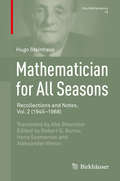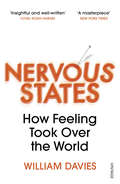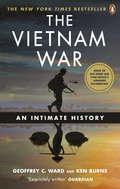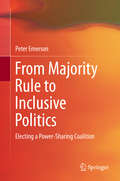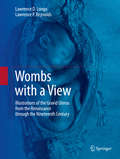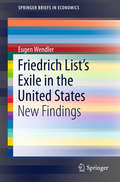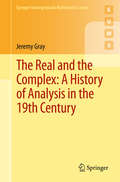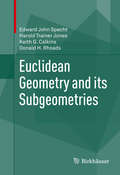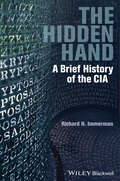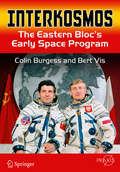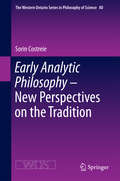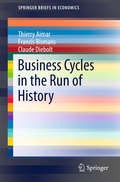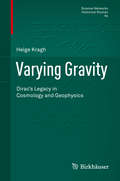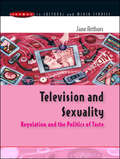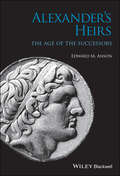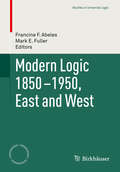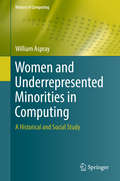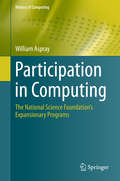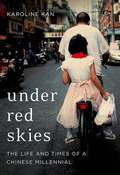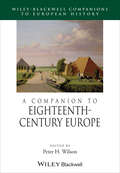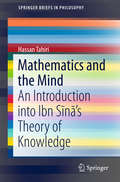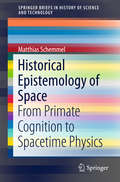- Table View
- List View
The Scottish Book: Mathematics from The Scottish Café, with Selected Problems from The New Scottish Book
by R. Daniel MauldinThe second edition of this book updates and expands upon a historically important collection of mathematical problems first published in the United States by Birkhäuser in 1981. These problems serve as a record of the informal discussions held by a group of mathematicians at the Scottish Café in Lwów, Poland, between the two world wars. Many of them were leaders in the development of such areas as functional and real analysis, group theory, measure and set theory, probability, and topology. Finding solutions to the problems they proposed has been ongoing since World War II, with prizes offered in many cases to those who are successful.In the 35 years since the first edition published, several more problems have been fully or partially solved, but even today many still remain unsolved and several prizes remain unclaimed. In view of this, the editor has gathered new and updated commentaries on the original 193 problems. Some problems are solved for the first time in this edition. Included again in full are transcripts of lectures given by Stanislaw Ulam, Mark Kac, Antoni Zygmund, Paul Erdös, and Andrzej Granas that provide amazing insights into the mathematical environment of Lwów before World War II and the development of The Scottish Book. Also new in this edition are a brief history of the University of Wrocław’s New Scottish Book, created to revive the tradition of the original, and some selected problems from it.The Scottish Book offers a unique opportunity to communicate with the people and ideas of a time and place that had an enormous influence on the development of mathematics and try their hand on the unsolved problems. Anyone in the general mathematical community with an interest in the history of modern mathematics will find this to be an insightful and fascinating read.
Mathematician for All Seasons: Recollections and Notes, Vol. 2 (1945–1968) (Vita Mathematica #19)
by Hugo SteinhausThis book presents, in his own words, the life of Hugo Steinhaus (1887–1972), noted Polish mathematician of Jewish background, educator, and mathematical popularizer. A student of Hilbert, a pioneer of the foundations of probability and game theory, and a contributor to the development of functional analysis, he was one of those instrumental to the extraordinary flowering of Polish mathematics before and after World War I. In particular, it was he who “discovered” the great Stefan Banach. Exhibiting his great integrity and wit, Steinhaus’s personal story of the turbulent times he survived – including two world wars and life postwar under the Soviet heel – cannot but be of consuming interest. His recounting of the fearful years spent evading Nazi terror is especially moving. The steadfast honesty and natural dignity he maintained while pursuing a life of demanding scientific and intellectual enquiry in the face of encroaching calamity and chaos show him to be truly a mathematician for all seasons.The present work will be of great interest not only to mathematicians wanting to learn some of the details of the mathematical blossoming that occurred in Poland in the first half of the 20th century, but also to anyone wishing to read a first-hand account of the history of those unquiet times in Europe – and indeed world-wide – by someone of uncommon intelligence and forthrightness situated near an eye of the storm.
Nervous States: How Feeling Took Over the World
by William DaviesWhy do we no longer trust experts, facts and statistics?Why has politics become so fractious and warlike?What caused the populist political upheavals of recent years?How can the history of ideas help us understand our present? In this bold and far-reaching exploration of our new political landscape, William Davies reveals how feelings have come to reshape our world. Drawing deep on history, philosophy, psychology and economics, he shows how some of the fundamental assumptions that defined the modern world have dissolved. With advances in science and medicine, the division between mind and body is no longer so clear-cut. The spread of digital and military technology has left us not quite at war nor exactly at peace. In the murky new space between mind and body, between war and peace, lie nervous states: with all of us relying increasingly on feeling rather than fact. In a book of profound insight and astonishing breadth, William Davies reveals the origins of this new political reality. Nervous States is a compelling and essential guide to the turbulent times we are living through.
The Vietnam War: An Intimate History
by Geoffrey C. Ward Ken BurnsThis definitive account is perfect for any history-buff this Father’s day.**The New York Times Bestseller****The book of the landmark documentary, The Vietnam War, by Ken Burns and Lynn Novick**The definitive work on the Vietnam War, the conflict that came to define a generation, told from all sides by those who were there.More than forty years after the Vietnam War ended, its legacy continues to fascinate, horrify and inform us. As the first war to be fought in front of TV cameras and beamed around the world, it has been immortalised on film and on the page, and forever changed the way we think about war.Drawing on hundreds of brand new interviews, Ken Burns and Geoffrey C. Ward have created the definitive work on Vietnam. It is the first book to show us the war from every perspective: from idealistic US Marines and the families they left behind to the Vietnamese civilians, both North and South, whose homeland was changed for ever; politicians, POWs and anti-war protesters; and the photographers and journalists who risked their lives to tell the truth. The book sends us into the grit and chaos of combat, while also expertly outlining the complex chain of political events that led America to Vietnam.Beautifully written, this essential work tells the full story without taking sides and reminds us that there is no single truth in war. It is set to redefine our understanding of a brutal conflict, to launch provocative new debates and to shed fresh light on the price paid in ‘blood and bone’ by Vietnamese and Americans alike.
From Majority Rule to Inclusive Politics: Electing A Power-sharing Coalition
by Peter EmersonThis book discusses voting procedures in collective decision-making. Drawing on well-established election processes from all over the world, the author presents a voting procedure that allows for the speedy but fair election of a proportional, all-party coalition. The methodology - a matrix vote - is accurate, robust and ethno-color blind. In the vote, the counting procedure encourages all concerned to cross the gender as well as any party and/or sectarian divides. While in the resulting executive each party will be represented fairly and, at best, with the consensus of parliament, every minister will be the one most suited to his/her new portfolio. By using preferential voting and thus achieving consensus, the matrix vote will be fundamental to the resolution of conflicts.The matrix vote can also be used when:• two or more parliamentary parties elect a coalition government• one parliamentary party elects a government or shadow cabinet, or organizations in civil society elect their governing boards or executive committees• any group chooses a fixed number of individuals to form a team in which each member carries out a different function
Wombs with a View: Illustrations of the Gravid Uterus from the Renaissance through the Nineteenth Century
by Lawrence D. Longo Lawrence P. ReynoldsThe volume provides an archive of some of the most beautiful illustrations ever made of the gravid uterus with fetus and placenta, which will serve future generations of investigators, educators, and students of reproduction. The approximately two hundred figures from over one hundred volumes included are from the late fifteenth through the nineteenth century. For each author whose work is depicted in this volume, we have used the first edition or first illustrated edition. In the commentary, each volume and illustration is placed in its historical perspective, noting both the significance of that image, but also some background on the life and work of the author. For most of the works cited, there are additional references for the reader who may wish to explore these in greater depth. This volume is a unique collection not only of these historical images, but also their place in the development of scientific study.
Friedrich List’s Exile in the United States: New Findings (SpringerBriefs in Economics)
by Eugen WendlerThis book presents new findings on the biography of Friedrich List, one of the world’s most important and popular economists. Following List's tracks in Pennsylvania and discussing several new sources, the author, Eugen Wendler, focuses on List's life and exile in the United States between 1825 and 1832. This richly illustrated book is as informative as it is well written. The author is a respected expert on the life and work of Friedrich List.
The Real and the Complex: A History of Analysis in the 19th Century (Springer Undergraduate Mathematics Series)
by Jeremy GrayThis book contains a history of real and complex analysis in the nineteenth century, from the work of Lagrange and Fourier to the origins of set theory and the modern foundations of analysis. It studies the works of many contributors including Gauss, Cauchy, Riemann, and Weierstrass.This book is unique owing to the treatment of real and complex analysis as overlapping, inter-related subjects, in keeping with how they were seen at the time. It is suitable as a course in the history of mathematics for students who have studied an introductory course in analysis, and will enrich any course in undergraduate real or complex analysis.
France, 1815-2003: Modern History For Modern Languages (PDF)
by Martin EvansMODERN HISTORY FOR MODERN LANGUAGES FRANCE 1815-2003 Written in an accessible style and assuming no prior knowledge, the books in this series address the specific needs of students on language courses. Approaching the study of history from an interest in contemporary politics and society, each book offers a clear historical narrative and sets its region into a world context. Chronological in approach, France 1815-2003 focuses on the main events in French political history, including major socio-economic themes where relevant. Events include the French Revolution, the Bourbon Restoration, the July Monarchy, the Second Republic and the Second Empire, The Third Republic, Occupied France, The Fourth Republic, The Gaullist Revolution, After De Gaulle: Pompidou and Giscard and From 'La Grande Alternance' to 'Normalization'. Drawing upon the latest research, particular emphasis has been given to the role of political memory, the contribution of women and the impact of colonialism and post-colonialism. A range of pedagogical devices and a lively prose style ensure that the book is tailor-made to the requirements of French language undergraduates. The book includes: . timelines of main events at the start of each chapter . glossary-style inserts concentrating on non-official perspectives to show the ways in which history has impacted upon the lives of ordinary people .topics for discussion .a selection of original documents including songs, posters, diaries and eye-witness accounts The book will be supplemented by a specialised web-site that will include links, interviews with key historians and further documents.
France, 1815-2003: Modern History For Modern Languages
by Martin EvansMODERN HISTORY FOR MODERN LANGUAGES FRANCE 1815-2003 Written in an accessible style and assuming no prior knowledge, the books in this series address the specific needs of students on language courses. Approaching the study of history from an interest in contemporary politics and society, each book offers a clear historical narrative and sets its region into a world context. Chronological in approach, France 1815-2003 focuses on the main events in French political history, including major socio-economic themes where relevant. Events include the French Revolution, the Bourbon Restoration, the July Monarchy, the Second Republic and the Second Empire, The Third Republic, Occupied France, The Fourth Republic, The Gaullist Revolution, After De Gaulle: Pompidou and Giscard and From 'La Grande Alternance' to 'Normalization'. Drawing upon the latest research, particular emphasis has been given to the role of political memory, the contribution of women and the impact of colonialism and post-colonialism. A range of pedagogical devices and a lively prose style ensure that the book is tailor-made to the requirements of French language undergraduates. The book includes: . timelines of main events at the start of each chapter . glossary-style inserts concentrating on non-official perspectives to show the ways in which history has impacted upon the lives of ordinary people .topics for discussion .a selection of original documents including songs, posters, diaries and eye-witness accounts The book will be supplemented by a specialised web-site that will include links, interviews with key historians and further documents.
Euclidean Geometry and its Subgeometries
by Edward John Specht Harold Trainer Jones Keith G. Calkins Donald H. RhoadsIn this monograph, the authors present a modern development of Euclidean geometry from independent axioms, using up-to-date language and providing detailed proofs. The axioms for incidence, betweenness, and plane separation are close to those of Hilbert. This is the only axiomatic treatment of Euclidean geometry that uses axioms not involving metric notions and that explores congruence and isometries by means of reflection mappings. The authors present thirteen axioms in sequence, proving as many theorems as possible at each stage and, in the process, building up subgeometries, most notably the Pasch and neutral geometries. Standard topics such as the congruence theorems for triangles, embedding the real numbers in a line, and coordinatization of the plane are included, as well as theorems of Pythagoras, Desargues, Pappas, Menelaus, and Ceva. The final chapter covers consistency and independence of axioms, as well as independence of definition properties. There are over 300 exercises; solutions to many of these, including all that are needed for this development, are available online at the homepage for the book at www.springer.com. Supplementary material is available online covering construction of complex numbers, arc length, the circular functions, angle measure, and the polygonal form of the Jordan Curve theorem. Euclidean Geometry and Its Subgeometries is intended for advanced students and mature mathematicians, but the proofs are thoroughly worked out to make it accessible to undergraduate students as well. It can be regarded as a completion, updating, and expansion of Hilbert's work, filling a gap in the existing literature.
The Hidden Hand: A Brief History of the CIA
by Richard H. ImmermanThe Hidden Hand is a succinct accessible and up-to-date survey of the Central Intelligence Agency’s history from its inception in 1947 to the present. Covers both aspects of the CIA’s mission – the collection and analysis of intelligence and the execution of foreign policy through covert, paramilitary operations De-mythologizes the CIA’s role in America’s global affairs while addressing its place within American political and popular culture Written by an esteemed scholar and high-ranking officer in the intelligence community, drawing on the latest research Assesses the agency’s successes and failures, with an eye to the complex and controversial nature of the subject
Interkosmos: The Eastern Bloc's Early Space Program (Springer Praxis Books)
by Colin Burgess Bert VisThis book focuses on the Interkosmos program, which was formed in 1967, marking a fundamentally new era of cooperation by socialist countries, led by the Soviet Union, in the study and exploration of space. The chapters shed light on the space program that was at that time a prime outlet for the Soviet Union's aims at becoming a world power. Interkosmos was a highly publicized Russian space program that rapidly became a significant propaganda tool for the Soviet Union in the waning years of communism. Billed as an international “research-cosmonaut” imperative, it was also a high-profile means of displaying solidarity with the nine participating Eastern bloc countries. Those countries contributed pilots who were trained in Moscow for week-long “guest” missions on orbiting Salyut stations. They did a little subsidiary science and were permitted only the most basic mechanical maneuvers.In this enthralling new book, and following extensive international research, the authors fully explore the background, accomplishments and political legacy of the Interkosmos program. Through personal and often highly revealing interviews with many of the participants they relate the very human story behind this extraordinary but controversial space venture..
Early Analytic Philosophy - New Perspectives on the Tradition: New Perspectives On The Tradition (The Western Ontario Series in Philosophy of Science #80)
by Sorin CostreieThis volume discusses some crucial ideas of the founders of the analytic philosophy: Gottlob Frege, Bertrand Russell and Ludwig Wittgenstein, or the ‘golden trio’. The book shows how these ‘old’ ideas are still present and influential in the current philosophical debates and to what extent these debates echo the original ideas. The collection aim is twofold: to better understand these fruitful ideas by placing them in the original setting, and to systematically examine these ideas in the context of the current debates animating philosophical discussions today. Divided into five sections, the book first sets the stage and offers a general introduction to the background influences, as well as delimitations of the initial foundational positions. This first section contains two papers dedicated to the discussion of realism and the status of science at that time, followed by two papers that tackle the epistemic status of logical laws. The next three sections constitute the core of the volume, each being dedicated to the most important figures in the early analytic tradition: Frege, Russell, and Wittgenstein. The last section gathers several essays that discuss either the relation between two or more analytic thinkers, or various important concepts such as ‘predicativism’ and ‘arbitrary function’, or the principles of abstraction and non-contradiction.
Business Cycles in the Run of History (SpringerBriefs in Economics)
by Thierry Aimar Francis Bismans Claude DieboltThis book analyzes the development of economic cycles in the run of history. The focus is on the development of cycle theory, with maximum emphasis upon ideas. Chapter 1 delivers an overview of the debate about cycles before the 1970s. Chapter 2 completes this survey by presenting the main empirical investigations since that time. Finally, Chapters 3 and 4 illustrate the discourse, by presenting, in the tradition of Burns and Mitchell, original case studies on France, South Africa, and Germany.
Varying Gravity: Dirac’s Legacy in Cosmology and Geophysics (Science Networks. Historical Studies #54)
by Helge KraghThe main focus of this book is on the interconnection of two unorthodox scientific ideas, the varying-gravity hypothesis and the expanding-earth hypothesis. As such, it provides a fascinating insight into a nearly forgotten chapter in both the history of cosmology and the history of the earth sciences.The hypothesis that the force of gravity decreases over cosmic time was first proposed by Paul Dirac in 1937. In this book the author examines in detail the historical development of Dirac’s hypothesis and its consequences for the structure and history of the earth, the most important of which was that the earth must have been smaller in the past.
Television and Sexuality (UK Higher Education OUP Humanities & Social Sciences Media, Film & Cultural Studies)
by Jane ArthursIn recent years there has been a marked increase in both the volume and diversity of sexual imagery and talk on television, condemned by some as a ‘rising tide of filth’, celebrated by others as a ‘liberation’ from the regulations of the past. Television and Sexuality questions both these responses through an examination of television’s multiple channels and genres, and the wide range of sexual information and pleasures they provide. The book explores the way that sexual citizenship and sexual consumerism have been defined in the digital era to reveal the underlying assumptions held by the television industry about the tastes and sexual identities of its diverse audiences. It draws on the work of key thinkers in cultural and media studies, as well as feminist and queer theory, to interrogate the political and cultural significance of these developments.With topics including the regulation of taste and decency, sex scandals in the news, the biology of sex in science programmes, and gay, lesbian and postfeminist identities in ‘quality’ drama, this book is key reading for students in cultural and media studies and gender studies.
Alexander's Heirs: The Age of the Successors
by Edward M. AnsonAlexander’s Heirs offers a narrative account of the approximately forty years following the death of Alexander the Great, during which his generals vied for control of his vast empire, and through their conflicts and politics ultimately created the Hellenistic Age. Offers an account of the power struggles between Alexander’s rival generals in the forty year period following his death Discusses how Alexander’s vast empire ultimately became the Hellenistic World Makes full use of primary and secondary sources Accessible to a broad audience of students, university scholars, and the educated general reader Explores important scholarly debates on the Diadochi
Modern Logic 1850-1950, East and West (Studies in Universal Logic)
by Francine F. Abeles Mark E. FullerThis book presents diverse topics in mathematical logic such as proof theory, meta-mathematics, and applications of logic to mathematical structures. The collection spans the first 100 years of modern logic and is dedicated to the memory of Irving Anellis, founder of the journal 'Modern Logic', whose academic work was essential in promoting the algebraic tradition of logic, as represented by Charles Sanders Peirce. Anellis’s association with the Russian logic community introduced their school of logic to a wider audience in the USA, Canada and Western Europe. In addition, the collection takes a historical perspective on proof theory and the development of logic and mathematics in Eastern Logic, the Soviet Union and Russia. The book will be of interest to historians and philosophers in logic and mathematics, and the more specialized papers will also appeal to mathematicians and logicians.
Women and Underrepresented Minorities in Computing: A Historical and Social Study (History of Computing #0)
by William AsprayThis text examines in detail the issue of the underrepresentation of women, African Americans, American Indians, and Hispanics in the computing disciplines in the U.S. The work reviews the underlying causes, as well as the efforts of various nonprofit organizations to correct the situation, in order to both improve social equity and address the shortage of skilled workers in this area. Topics and features: presents a digest and historical overview of the relevant literature from a range of disciplines, including leading historical and social science sources; discusses the social and political factors that have affected the demographics of the workforce from the end of WWII to the present day; provides historical case studies on organizations that have sought to broaden participation in computing and the STEM disciplines; reviews the different approaches that have been applied to address underrepresentation, at the individual, system-wide, and pathway-focused level; profiles the colleges and universities that have been successful in opening up computer science or engineering to female students; describes the impact of individual change-agents as well as whole organizations.
Participation in Computing: The National Science Foundation’s Expansionary Programs (History of Computing)
by William AsprayThis book provides a history of the efforts of the US National Science Foundation to broaden participation in computing. The book briefly discusses the early history of the NSF's involvement with education and workforce issues. It then turns to two programs outside the computing directorate (the ADVANCE program and the Program on Women and Girls) that set the stage for three programs in the NSF computing directorate on broadening participation: the IT Workforce Program, the Broadening Participation in Computing program, and the Computing Education for the 21st Century program. The work looks at NSF-funded research and NSF-funded interventions both to increase the number of women, underrepresented minorities (African Americans, Hispanics, and American Indians) and people with disabilities, and to increase the number of public schools offering rigorous instruction in computing. Other organizations such as the ACM, the Computer Science Teachers Association, and Code.org are also covered. The years covered are primarily 1980 to the present.
Under Red Skies: The Life and Times of a Chinese Millennial (PDF)
by Karoline KimKaroline Kan was born in 1989, the year of the Tiananmen Square massacre: her generation has always been caught between China's authoritarian politics and its hyper-modern technology and economic boom. In her quest to understand the shifting sands of global, connected China, Karoline turns to her family, who have survived Maoism and its legacy by breaking with tradition. Navigating a society beset by poverty and often violent political unrest, the Kans swapped rural villages for crowded city streets in search of a better way of life. Now a journalist, Kan recounts gripping tales of her grandmother, who struggled to help her family through the Great Famine; of her mother, who defied the One-Child Policy by giving birth to Karoline; and of her cousin, a factory worker scraping by on less than £1 per hour. An ambitious millennial pursuing her career and personal life in a time of dizzyingly rapid social change, Kan discovers her own story's roots in the China of previous generations.
A Companion to Eighteenth-Century Europe (Blackwell Companions to European History)
by Peter H. WilsonThis Companion contains 31 essays by leading international scholars to provide an overview of the key debates on eighteenth-century Europe. Examines the social, intellectual, economic, cultural, and political changes that took place throughout eighteenth-century Europe Focuses on Europe while placing it within its international context Considers not just major western European states, but also the often neglected countries of eastern and northern Europe
Mathematics and the Mind: An Introduction into Ibn Sīnā’s Theory of Knowledge (SpringerBriefs in Philosophy)
by Hassan TahiriThis book examines how epistemology was reinvented by Ibn Sīnā, an influential philosopher-scientist of the classical Islamic world who was known to the West by the Latinised name Avicenna. It explains his theory of knowledge in which intentionality acts as an interaction between the mind and the world. This, in turn, led Ibn Sīnā to distinguish an operation of intentionality specific to the generation of numbers.The author argues that Ibn Sīnā’s transformation of philosophy is one of the major stages in the de-hellinisation movement of the Greek heritage that was set off by the advent of the Arabic-Islamic civilisation. Readers first learn about Ibn Sīnā’s unprecedented investigation into the concept of the number and his criticism of such Greek thought as Plato’s realism, Pythagoreans’ empiricism, and Aristotle’s conception of existence. Next, coverage sets out the basics of Ibn Sīnā’s theory of knowledge needed for the construction of numbers. It describes how intentionality turns out to be key in showing the ontological dependence of numbers as well as even more critical to their construction. In describing the various mental operations that make mathematical objects intentional entities, Ibn Sīnā developed powerful arguments and subtle analyses to show us the extent our mental life depends on intentionality. This monograph thoroughly explores the epistemic dimension of this concept, which, the author believes, can also explain the actual genesis and evolution of mathematics by the human mind.
Historical Epistemology of Space: From Primate Cognition to Spacetime Physics (SpringerBriefs in History of Science and Technology #0)
by Matthias SchemmelThis monograph investigates the development of human spatial knowledge by analyzing its elementary structures and studying how it is further shaped by various societal conditions. By taking a thoroughly historical perspective on knowledge and integrating results from various disciplines, this work throws new light on long-standing problems in epistemology such as the relation between experience and preformed structures of cognition. What do the orientation of apes and the theory of relativity have to do with each other? Readers will learn how different forms of spatial thinking are related in a long-term history of knowledge. Scientific concepts of space such as Newton’s absolute space or Einstein’s curved spacetime are shown to be rooted in pre-scientific structures of knowledge, while at the same time enabling the integration of an ever expanding corpus of experiential knowledge. This work addresses all readers interested in questions of epistemology, in particular philosophers and historians of science. It integrates forms of spatial knowledge from disciplines including anthropology, developmental psychology and cognitive sciences, amongst others.
